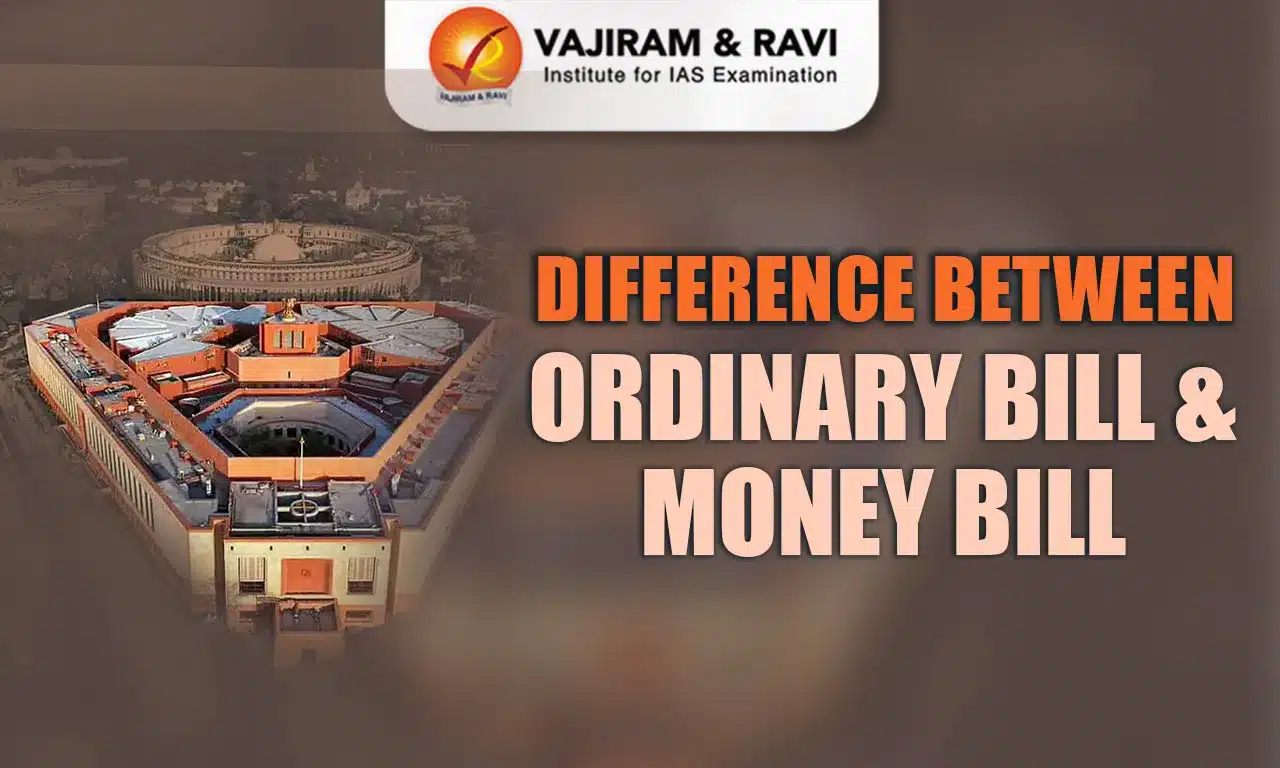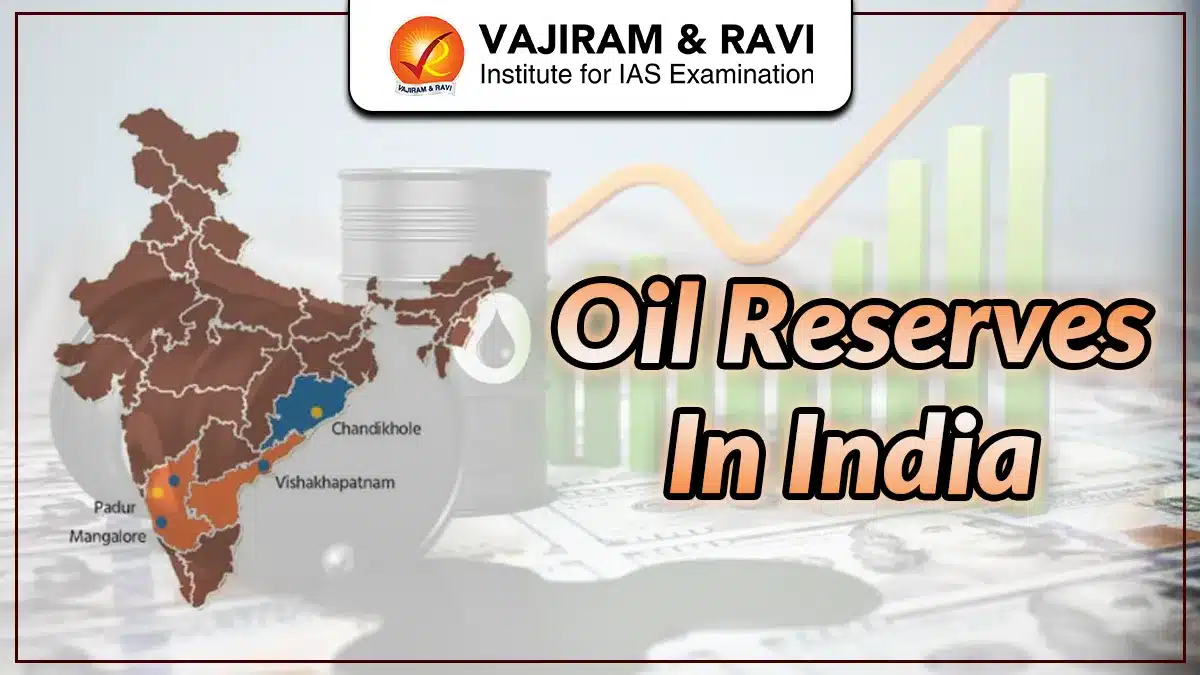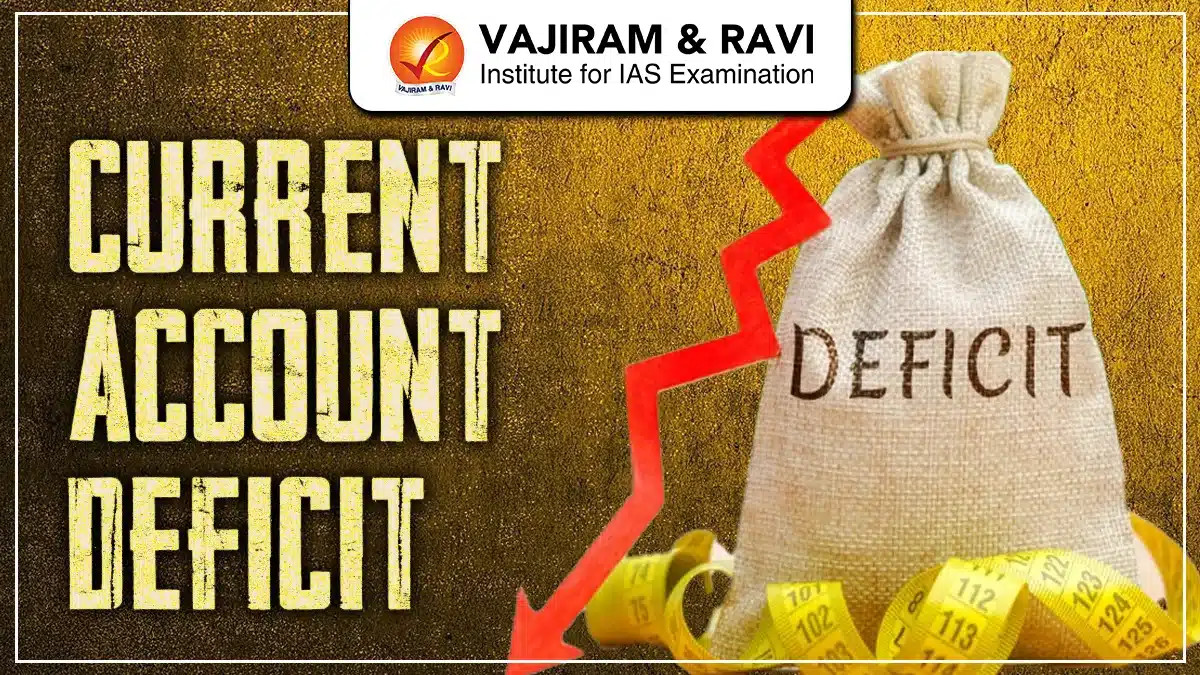In the Indian parliamentary system, bills are classified into several categories based on their content and implications. Two such significant categories are the Ordinary Bill and the Money Bill. While both are legislative proposals, the procedure for introducing, passing, and approving these bills differs fundamentally due to their nature and constitutional provisions.
Understanding these differences is crucial for civil service aspirants and anyone interested in Indian polity and governance. Let’s explore the meaning, features, and key distinctions between Ordinary and Money Bills.
What is an Ordinary Bill?
An Ordinary Bill refers to a legislative proposal concerned with any matter other than financial subjects specified under Article 110 of the Indian Constitution. It can relate to areas such as education, criminal law, environment, trade, or any of the items in the Union or Concurrent List (excluding those dealing with taxation or government expenditure).
Key Features of an Ordinary Bill
- Can be introduced in either House of Parliament (Lok Sabha or Rajya Sabha).
- Requires approval of both Houses.
- President’s assent is mandatory after passage by both Houses.
- Can be referred to as a joint sitting if there is disagreement between the Houses.
What is a Money Bill?
A Money Bill is a legislative proposal that deals exclusively with financial matters such as taxation, borrowing of money, expenditure from the Consolidated Fund of India, and other financial subjects listed in Article 110 of the Constitution.
Key Features of a Money Bill
- Can only be introduced in the Lok Sabha, and only with the prior recommendation of the President of India.
- The Rajya Sabha cannot amend or reject a Money Bill. It can only make recommendations, which the Lok Sabha may accept or ignore.
- The Speaker of the Lok Sabha certifies whether a bill is a Money Bill.
- Must be passed by Lok Sabha only, and is deemed passed even if Rajya Sabha doesn’t act on it within 14 days.
Difference Between Ordinary Bill and Money Bill
While Ordinary Bills go through a detailed bicameral legislative process, Money Bills have a streamlined procedure owing to their financial nature and urgency. These procedural differences help maintain a balance between democratic deliberation and administrative efficiency. Here is a tabulated comparison to clearly understand the Difference Between Ordinary Bill and Money Bill:
| Difference Between Ordinary Bill and Money Bill | ||
| Aspect | Ordinary Bill | Money Bill |
|
Definition |
Relates to any subject except financial matters defined in Article 110 |
Deals strictly with matters like taxation, borrowing, or expenditure under Article 110 |
|
Introduction |
Can be introduced in either House of Parliament |
Can be introduced only in Lok Sabha with President’s recommendation |
|
Recommendation of President |
Not required |
Mandatory before introduction |
|
Role of Rajya Sabha |
Can suggest changes, amend, and even reject the bill |
Can only recommend changes; cannot amend or reject |
|
Time limit for Rajya Sabha |
No specific time limit to act |
Must return the bill within 14 days |
|
Speaker’s Certification |
Not required |
Mandatory — Speaker certifies it as a Money Bill |
|
Joint Sitting Provision |
Applicable if there is disagreement between both Houses |
Not applicable |
|
Examples |
Indian Penal Code (Amendment) Bill, Right to Education Bill |
Finance Bill, Appropriation Bill, Taxation Law Amendment Bill |
Constitutional Provisions
- Article 110 defines a Money Bill and its scope.
- Article 111 relates to the President’s assent on bills.
- Article 108 provides for a joint sitting, applicable only to Ordinary Bills when there is a deadlock between the two Houses.
Last updated on January, 2026
→ Check out the latest UPSC Syllabus 2026 here.
→ Join Vajiram & Ravi’s Interview Guidance Programme for expert help to crack your final UPSC stage.
→ UPSC Mains Result 2025 is now out.
→ UPSC Notification 2026 is scheduled to be released on January 14, 2026.
→ UPSC Calendar 2026 is released on 15th May, 2025.
→ UPSC Prelims 2026 will be conducted on 24th May, 2026 & UPSC Mains 2026 will be conducted on 21st August 2026.
→ The UPSC Selection Process is of 3 stages-Prelims, Mains and Interview.
→ UPSC Result 2024 is released with latest UPSC Marksheet 2024. Check Now!
→ UPSC Toppers List 2024 is released now. Shakti Dubey is UPSC AIR 1 2024 Topper.
→ Also check Best IAS Coaching in Delhi
Difference Between Ordinary Bill and Money Bill FAQs
Q1. Who decides whether a bill is a Money Bill or not?+
Q2. Can a Money Bill be introduced in Rajya Sabha?+
Q3. What happens if Rajya Sabha does not return a Money Bill within 14 days?+
Q4. Is joint sitting possible for a Money Bill?+
Q5. Can the President refuse to give assent to a Money Bill?+

















